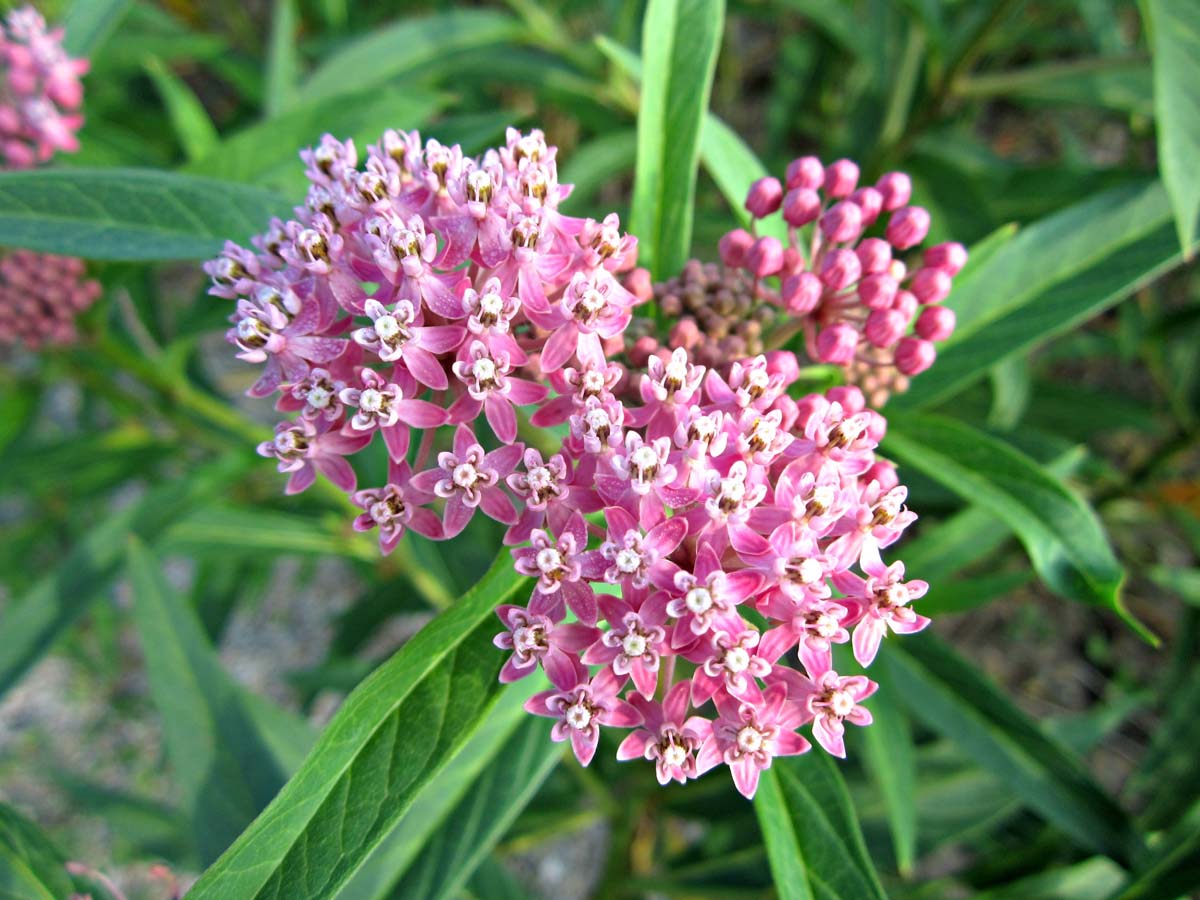Description
Asclepias – Milkweed – Silkweed
There are about 110 species of evergreen or deciduous clump or spreading perennials and a few subshrubs rarely shrubs, in this genus. They occur form well-drained sites in scrub or grassland sometimes from marsh lands, wet scrub, and lakeside areas in South Africa and temperate North America and tropical North and South America. They produce narrowly elliptic to lance shaped or ovate alternate sometimes spirally arranged leaves. It bears umbel-like cymes of numerous small flowers up to 1” across. The lobes are arch or bent sharply back to show the unusual upright horn like stamens. The flowers are followed by spindle shaped green fruits that vary in length which ripen to yellowish brown that split open to expose rows of seeds with long silky white hairs thus the common name, silkweed. Their great for attracting bee’s and butterflies, the sap is acrid and poisonous and the butterfly larvae that feed on them are toxic to predators such as birds. There are great for a border, meadow or wildflower gardens. Contact with sap may irritate skin.
Cold hardiness varies greatly between species. These easily grown plants that need fertile, well-drained, loamy soil in full sun. Divide in spring.
Prone to Whiteflies, spider mites, aphids, mealybugs, rust, bacterial leaf spots and fungi leaf spots.
Ascelpias syriaca – Common Milkweed – This vigorous softly hairy perennial from Eastern North America grows to 6’ feet tall and can spread indefinitely. On upright stems it carries opposite oblong-ovate leaves 4-10” long, mid-green above with blue-green undersides. In summer it bears fragrant greenish purple and pink occasionally white flowers in axillary nodding umbel-like cymes 2” wide. Pendent softly spiny fruit follows the flowers to 5” long. It may become weedy.
Zones 3-9





